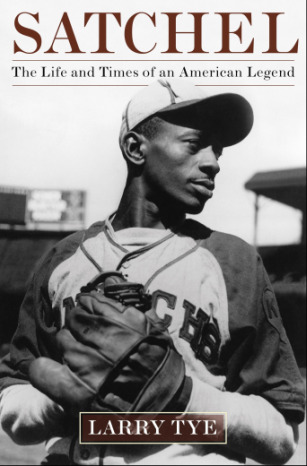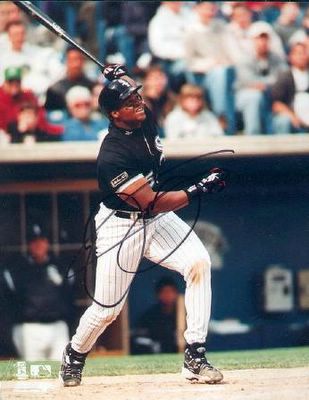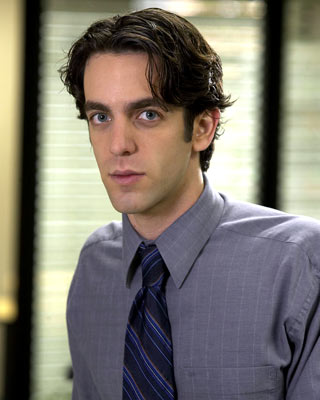Well, it's fun being a Yankee fan these days.
The Yankees are currently 9-3, sitting atop the American League East division (albeit tied with the Tampa Bay Rays), with a nice five-game lead over the despised Red Sox and their small fiefdom. Their 69 runs scored and +25 run differential are both best in the AL, though not the best in baseball. Over in the Senior Circuit, the Phillies have scored a whopping 78 runs and both they and the Giants (??!?!) have a slightly better differential than the Yanks, though both are "only" 8-4.
The Yankees have not had a start this good since 2003, when they went 18-3 in the first three weeks of the season and finished the year with 103 wins and an American League pennant. Given that six of the team's next nine games come against the last-place Baltimore Orioles (2-11) and the other three are at home against the last place White Sox (4-9), achieving that 18-3 mark doesn't seem so far out of reach. Not that your April record wins you anything, unless your MLB betting regimen goes month-to-month.
The Yanks aren't exactly hitting on all cylinders, but those who are hitting are doing so well enough to more than make up for those who are struggling. Mark Teixeira, for example, is a notoriously slow starter, and is hitting only .114 at the moment. Indeed, his career .239 batting average in April is about 40 points lower than in any other month. however, he did hit his first homer of the season yesterday, so perhaps that's a harbinger of better days.
Nick Johnson has struggled, too the tune of a .158 batting average, though his league-leading 14 walks give him a more than respectable .404 OBP. But Jeter and Posada are both hitting about .380 and have three homers to their credit. Robinson Cano leads the team with four bombs and his hitting .340 in his own right. He had a hit in every game before Saturday's contest against the Rangers. New CF Curtis Granderson is hitting .311 with a couple of homers and four steals in four tries, and Alex Rodriguez had a .938 OPS, thanks largely to his team leading five doubles.
Nick Swisher's hitting only .200 at the moment, though he generally...well, Swisher doesn't generally do anything, except hit 20+ homers. In the five more or less full years he's been in the majors, he's only had one season in which his final OPS differed by less than 90 points from the previous seasons. Sure, he'll probably end up around .250 with 25 homers and an OPS around .825 or so, but he could just as easily hit .220 as .260, for all we know.
The real oddity is Brett Gardner. I had my doubts about him last year, and frankly the odds were and still are against him becoming a good everyday player, but he's certainly done his job so far this year. He's played in 10 of the team's 12 games, hitting .333, scoring nine runs and stealing seven bases.
His current "pace" would have him scoring 144 runs and stealing 112 bases despite never hitting the ball hard enough to get an extra base under his own power. Since the record for runs scored without an extra base hit is just 29 - and that was only accomplished by a former sprinter who was recruited as a designated base stealer by wacko A's owner Charlie Finley in the 1970's - well, I wouldn't bet on anything like that happening. More likely, Gardner will finish with something like a .280 batting average and 80 runs scored, with 40 or 50 steals at a high success rate. If he continues to slap singles, take walks and steal bases, he'll certainly earn his pay.
One of the biggest surprises so far this year has been the resurgence of Andy Pettitte. At 38 years old, you could hardly have expected him to improve on the level he's set for himself the last three years. That's about 15 Wins and an ERA slightly over 4.00, which is solid, if not Hall of fame material. But he's got a 1.35 ERA in a team leading 20 innings, having just quieted the Rangers' formidable bats for eight innings on Sunday. He's due to regress, of course, but if he can somehow win another 15 games this year, he would move into the top 50 in career wins. While the chance to tie Amos Rusie and Iron Man Joe McGinnity may not sell a lot of baseball tickets, it sure would like nice on his resume, don't you think?
Not that CC Sabathia and A.J. Burnett have been slouching, mind you. Both are 2-0, like Pettitte, and both have an ERA comfortably under 3.00, though not as low as Andy's. Phil Hughes was far from sharp in his only start, walking five batters in as many innings, but at least he managed a Win.
Javy Vazquez has been awful in his two starts, surrendering 12 earned runs (14 total) in eleven innings. Granted, it a little early to start booing him, but at some point the guy who finished 4th in the 2009 NL Cy Young voting had better start pitching like the 15-game winner the Yankees thought they were getting when they dumped off traded Melky Cabrera to the Braves.
The bullpen has had its ups and downs, but the like the starting lineup, the good parts (Mariano Rivera, Joba Chamberlain, Damaso Marte) have more than compensated for the bad (David Robertson, Alfredo Aceves). Sergio Mitre has defied all the odds simply by getting through about two innings of work without allowing a run. Don't bet on that to continue.
Chan Ho Park has had his ups and downs, including a well-documented case of the runs, which he had and then allowed to the Red Sox on Opening Day. He deserves credit for taking the blame himself and not putting Joe Girardi in an awkward position (why would he use a pitcher who was weak and dehydrated from the flu? On opening day? Against the Red Sox?) but of course good character doesn't get that home run ball back.
In any case, though there a few guys over-performing, there are also several who have yet to hit their stride, and there's little reason to think that the Yankees can't continue to wreak havoc on the American League.


















